Each year, Gallery Weekend Berlin attracts hundreds of collectors, gallery owners, artists and viewers. Participating museums, galleries and project spaces turn the city into a metropolis thriving with modern art. This year’s edition, the eleventh, apart from official exhibitions presented by 47 galleries, was enriched by an extensive programme of accompanying events; including exhibitions of Polish artists.
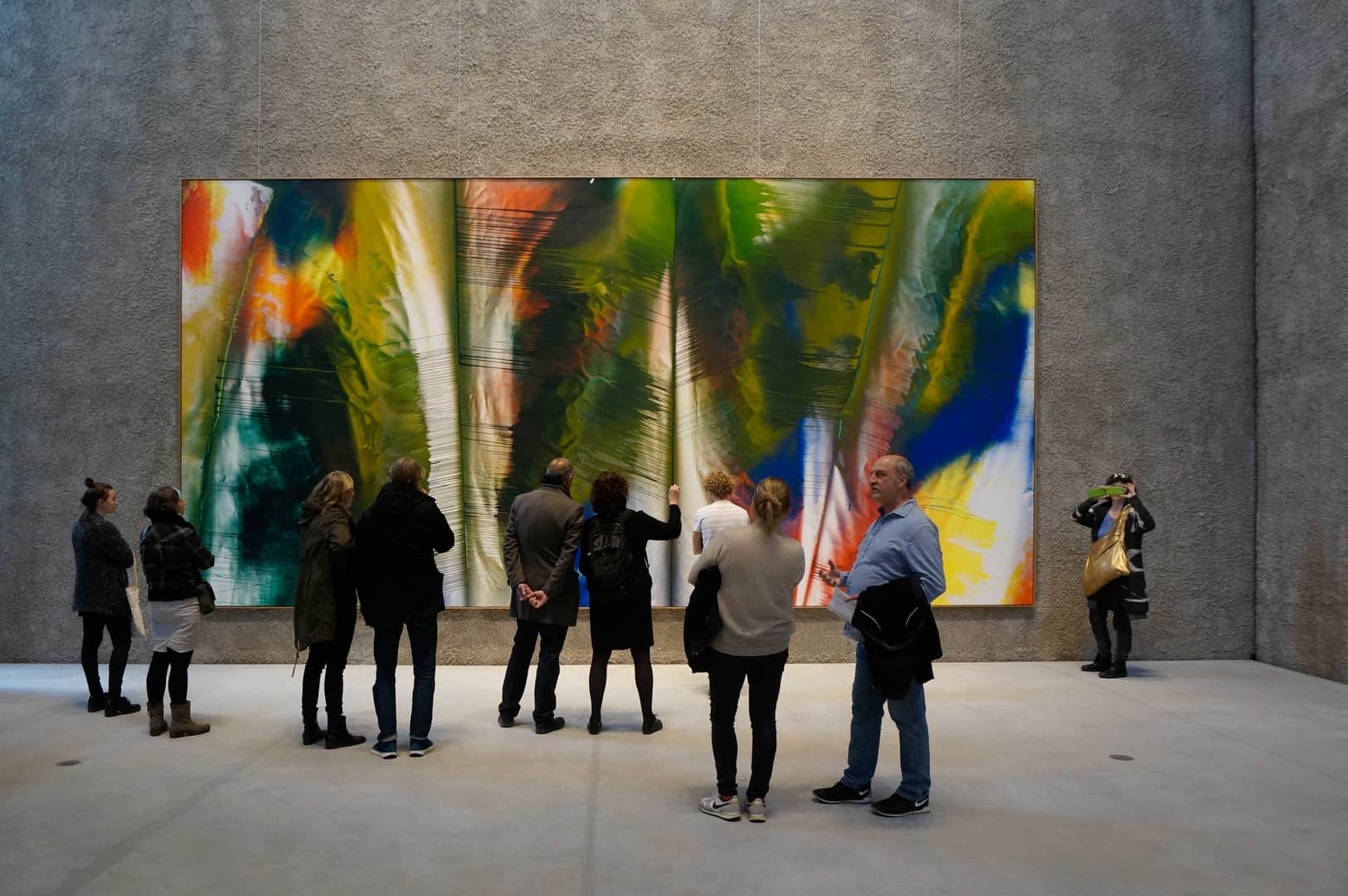
Katharina Grosse, The Smoking Kid, opening, Johann Koenig, Berlin, Photo. Marek Wolynski, Gallery Weekend Berlin, 2015
A day before openings of official programme exhibitions, a number of riveting exhibitions opened. Future Gallery presented ‘Field Vision’, a show bringing together works by Christian Jankowski and Jon Rafman. Through videos and photographs, the exhibition related to issues connected with sensual experience of images, blindness and digitalisation of reality. In turn, Duve showcased ‘Echoes’, an individual exhibition by Marguerite Humeau, for which the artist used a couple of millilitres of viper’s deadly venom brought in from North America. Two futuristic sculptures presenting gigantic unidentified insects were placed in a room painted sulphur yellow. The artist took on the attempt to initiate a dialogue between two civilizations: ancient Egypt and contemporary synthetic Biology, by presenting an immersive installation, which could be defined as an updated version of Cleopatra’s tomb. Viper’s deadly venom, pink hippopotamus’s milk or alligator’s blood are only a few elements which Humeau used to initiate a visually captivating discussion on ubiquitous obsession with eternal life.

Marguerite Humeau Echoes, exhibition view, Duve Berlin, Photo Courtesy Duve Berlin
On the same day, mysteriously sounding ‘Ngorongoro’ opened. Located in a former factory on the outskirts of the city in Lehderstraße, it was a huge display showcasing works by one hundred artists. The opening itself lasted almost twelve hours, and visitors exhausted from overwhelming excitement could relax in an open-air swimming pool with heated water.
On the official opening night, the attention of nearly all visitors turned towards Johann König‘s new space. Initially running a gallery in Rosa-Luxemburg Platz, then near Martin-Gropius-Bau, König moved his exhibition space to St Agnes Church this year, a place he had used for projects during previous editions of Gallery Weekend. Last year, a monumental screening ‘Antiherbst [Anti-Autumn]’ was presented there by Michael Sailstorfer, and before that this desacralized church had been a location for Alicja Kwade’s ‘Nach Osten’.
During the previous months, the building was substantially modified: many partitions were built and the central nave was divided into two floors. The ground floor became a place for showcasing artists represented by a gallery according to one artist-one work principle. In turn, the first floor was occupied by ‘The Smoking Kid’, Katharina Grosse’s solo show. The artist, who has the habit of painting entire exhibition spaces (including the floor and earth spread over the exhibition spaces), this time limited herself to gigantic abstract canvasses, of which the scale corresponded to the size of the room. With the official opening of König’s gallery in St Agnes Church, Berlin acquired space that could be called the cathedral of contemporary art.
In the last few years, clusters of contemporary art galleries appeared in various districts of the capital of Germany. One of them is surely the Galerienhaus building in Lindenstraße, housing 14 exhibition areas, and a nearby pavilion in Markgrafenstraße, where you can find galleries like Carlier Gebauer, Barbara Thumm or Schleicher/Lange. This year in Galerienhaus, two exhibitions by Polish artists were presented: Żak Branicka Gallery organised an individual show of new and recent works by Agnieszka Polska, and Galerie Berinson showcased Wacław Szpakowski’s works dated back to the beginning of last century.

Agnieszka Polska, Zak Branicka, Berlin 2015, photo Contemporary Lynx
In the northern part, another group of galleries cropped up near Auguststraße. Apart from private galleries like Eigen + Art, Kicken or Neugerriemschneider, Kunst-Werke Institute for Contemporary Arts is also located here – in a former margarine factory rebuilt in late 90s of the 20th century into contemporary art centre. Located a couple of streets north, St Elisabeth Church, another desacralized space, served as a location for an exhibition of Magdalena Abakanowicz’s exhibition.
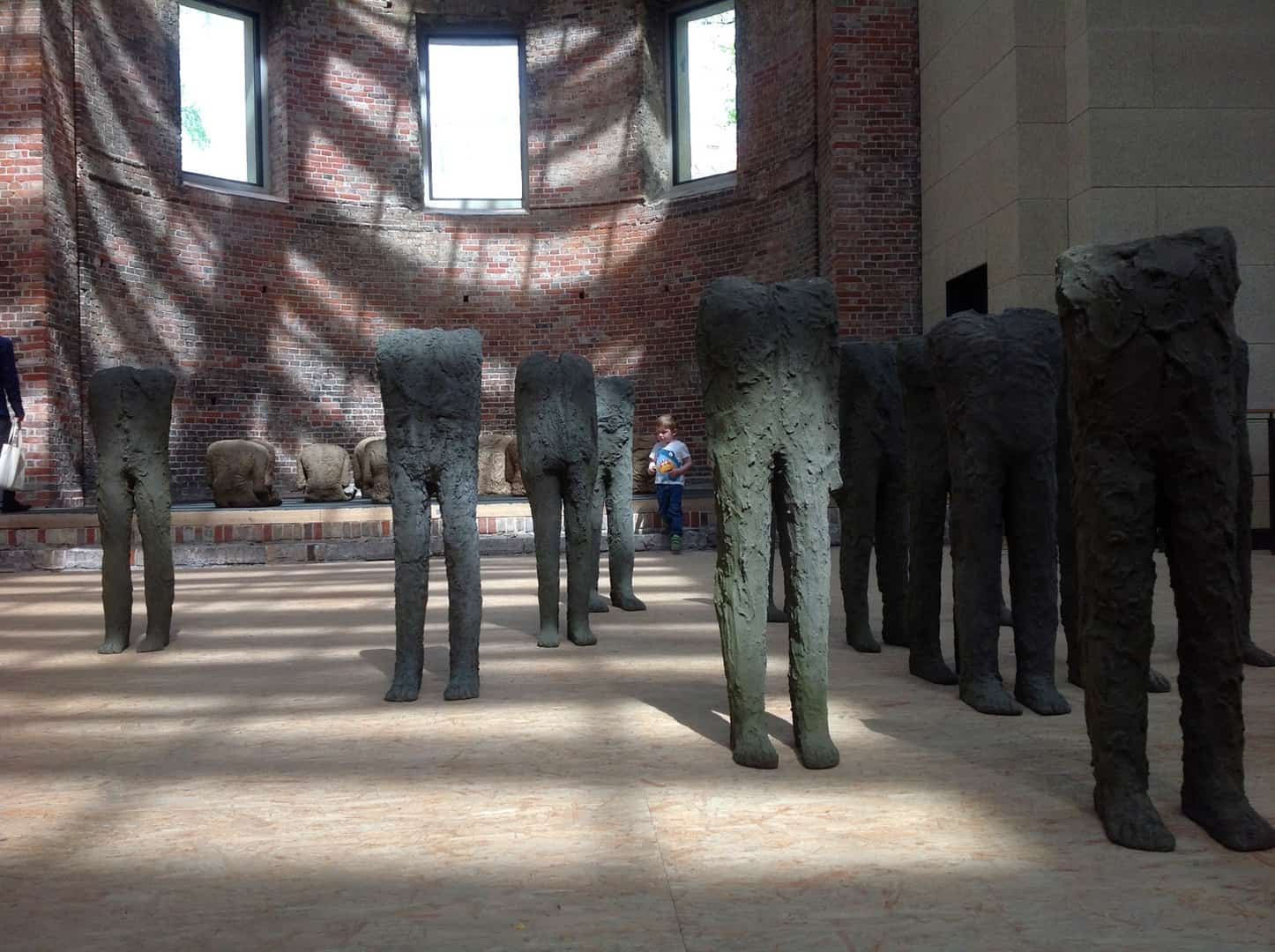
Magdalena Abakanowicz, Bambini, 1998-99, St. Elisabeth Church in Berlin, photo Contemporary Lynx
Two years ago, as part of the 7th Berlin Biennale it also hosted a Polish artist – Paweł Althamer with his ‘Draftsmen’s Congress’ project. Compared to previous exhibitions, the space itself became modified and modernised. Abakanowicz’s works presented in a raw, grey-brick interior of the building, interacted with the venue of the exposition itself, as well as with the way it had been used in the past. However, the majority of visitors in this area were captivated by Sprueth Magers Gallery. Crowds of people queued to see ‘Where Nature Runs Riot’ (2015), Cyprien Gaillard’s solo show featuring phenomenal multi-layered „Nightlife”, a fifteen-minute-long 3D masterpiece. Shot at night over the past two years in Cleveland, Los Angeles and Berlin, the film explores relations between nature and civilization as well as Afro-American history of struggle, new ways of perceiving monuments, and urban botany, all presented in a mesmerising, hallucinatory manner.

Cyprien Gaillard, Nightlife (2015), 3D motion picture, DCI DCP 14:28 min, Copyright Cyprien Gaillard, Courtesy Sprüth Magers, (installation view, Cyprien Gaillard: “Where Nature Runs Riot”, Sprüth Magers Berlin, May 2 – July 18, 2015)

Cyprien Gaillard, Ammonite Dub (2015), ammonite, record needle, Copyright Cyprien Gaillard, Courtesy Sprüth Magers (installation view, Cyprien Gaillard: “Where Nature Runs Riot”, Sprüth Magers Berlin, May 2 – July 18, 2015)
In the western part, the areas of Potsdamer Straße and Schöneberger Ufer have recently become a place where over two hundred galleries clustered. In Esther Schipper Gallery Daniel Steegmann Mangrané presented ‘Spiral Forest (kingdom of all the animals and all the beasts is my name)’ an exhibition comprising of photographs, objects, films and installations. Similarly to Gaillard, the artist deals with the issues related to nature through the use of state-of-the art technology – the Oculus headset, which enable its users to immerse into virtual reality and find themselves in an endangered rain forest.

Daniel Steegmann Mangrané, Phantom (kingdom of all the animals and all the beasts is my name), 2014-2015, Courtesy: The Artist and Esther Schipper Photo: © Andrea Rossetti
In turn, the only joint exhibition in the official programme could be found at Tanya Leighton‘s. Sanya Kantarovsky, a young American artist working mainly in painting, this time took on the role of a curator. ‘No Joke’ was a joint exposition which jokingly took on the topic of the profession of an artist. The starting point of the exhibition presenting works of nineteen artists, among others Richard Artschwager’s, Michael Smith’s or George Grosz’s, was disapproval expressed by the artists themselves in relation to their artistic activities and questioning the purposefulness of creating art.
Performance is surely the least frequent medium of expression during Berlin’s Gallery Weekend. During the last few years, there have been only a couple of instances of shows including this kind of art. In 2013, Niels Borch Jansen Gallery, presented Douglas Gordon’s music performance along with his photographs. A wolf taxidermy was placed on the piano situated in the middle of the gallery and during the opening Clara Habercamp – a 22-year-old composer and pianist – played the main theme from Prokofiev’s ‘Peter and the Wolf’ interpreted by Gordon. In 2014, Wu Tsang – a performance artist based in Los Angeles – presented the performance which directly refers to his two-channel projection entitled ‘A day in the life of Bliss’ both in Isabella Bortolozzi Gallery, and during the after-party at Chester’s. This year, performance was only present at the Johnen Gallery. A few-second work by Tino Seghal presented at the courtyard, seemed merely a substitute for the artist’s works staged in Tate Modern’s Turbine Hall in 2013 or during the 55th Venice Biennale where Sehgal was awarded with the Golden Lion.
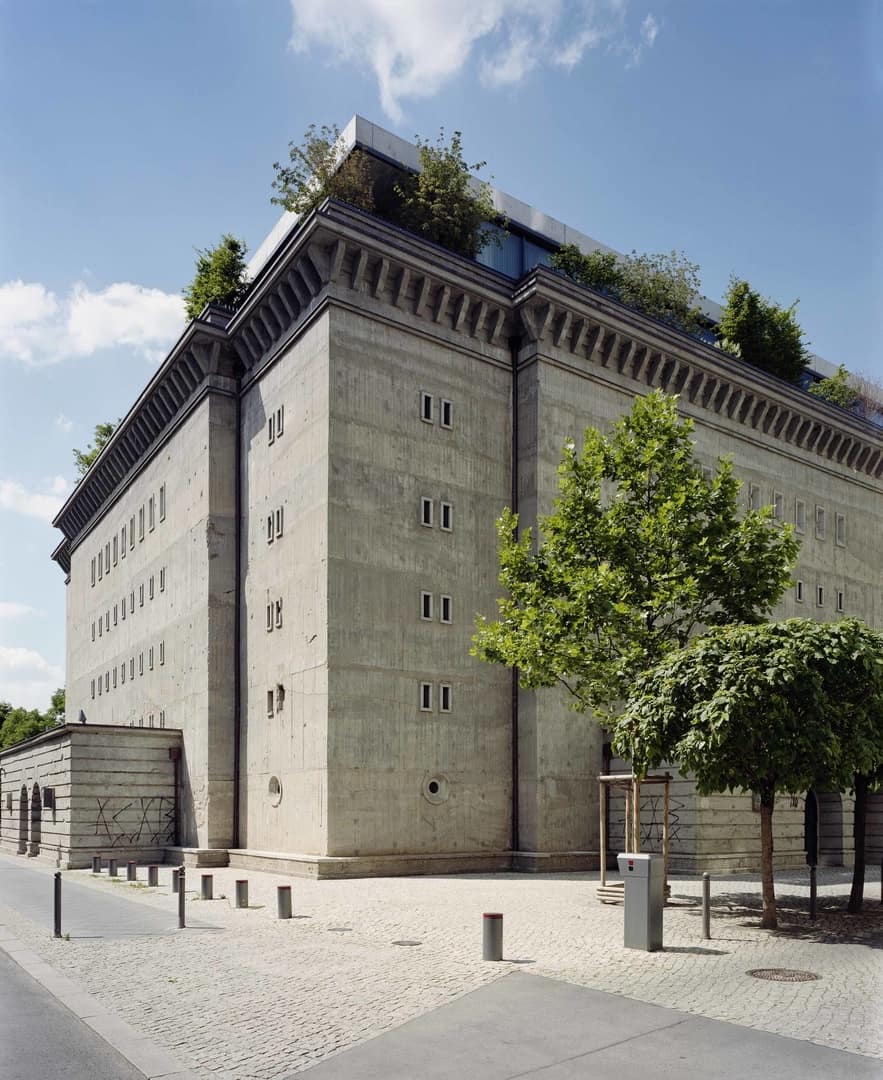
Exterior of the Bunker, Photo. NOSHE, Gallery Weekend Berlin, 2015
Similarly to last year’s event, Christian Boros opened the door to the building that houses his collection with no need to book tickets a few months in advance. A Nazi bunker built in 1943, where the collector has a private museum and his house, was previously a warehouse for textiles as well a dry and tropical fruit and in the 90s it was a hardcore techno club. Since 2008, Christian Boros has lived in a penthouse built on the roof of the bunker, and lower floors have been designated for a private museum, in which you can see the works of Monika Sosnowska, Robert Kuśmirowski Michael Sailstorfer, Alicja Kwade, Thomas Ruff, Wolfgang Tillmans or Olafur Eliasson among others. Unusual, cold, raw space converted into exhibition space by Jens Casper and Petra Petersson, creates excellent conditions to present contemporary art.

Thomas Ruff, Stern, 1990, Photo. NOSHE, Gallery Weekend Berlin, 2015
Gallery Weekend Berlin presents so much art each year that it is literally impossible to see it all in just one weekend. Fortunately enough, most exhibitions are open until mid-June or even longer. What distinguishes Berlin from other cities is surely the fact that there is a growing tendency to use unusual places for showcasing contemporary art. Bunkers, churches, desolate factories become exhibition space rejecting the popular white cube model, challenging gallery-goers’ habits, and successfully offering new ways of presentation and reception of contemporary art.

Alicja Kwade, Boros Collection / Bunker Berlin, 2015, photo Contemporary Lynx
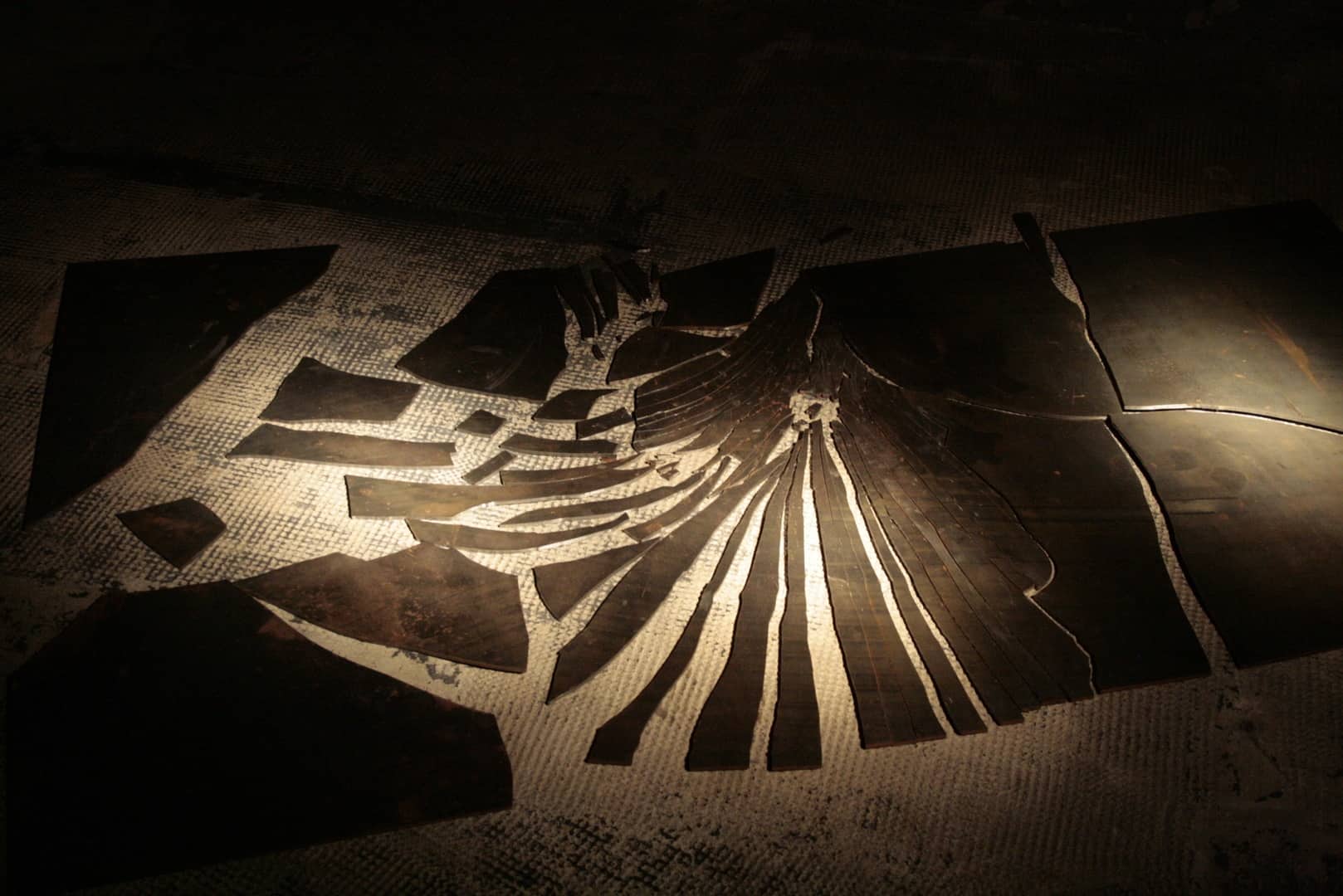
Alicja Kwade, Boros Collection / Bunker Berlin, 2015, photo Contemporary Lynx
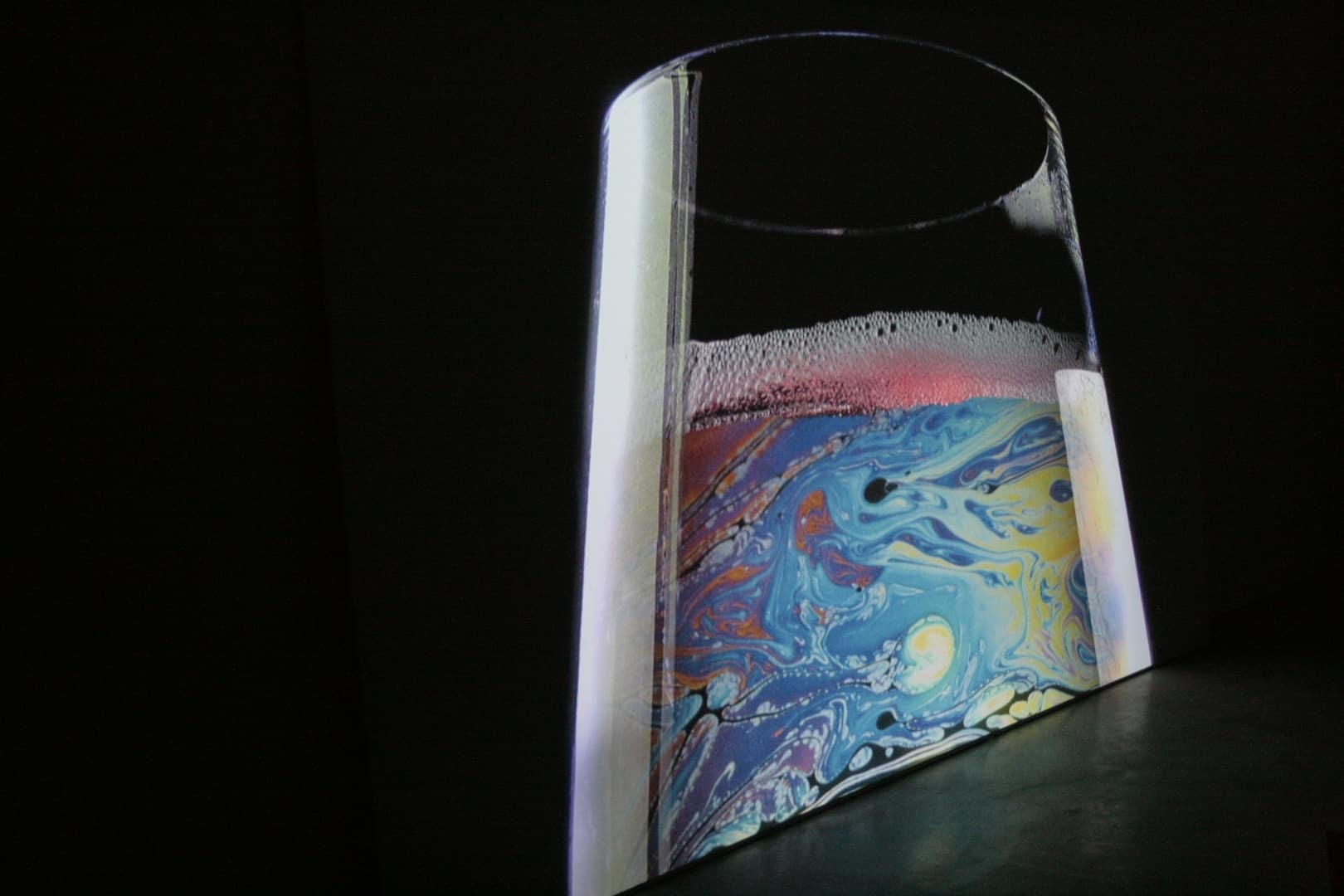
Agnieszka Polska, Zak Branicka, Berlin 2015, photo Contemporary Lynx

Alicja Kwade, Boros Collection / Bunker Berlin, 2015, photo Contemporary Lynx
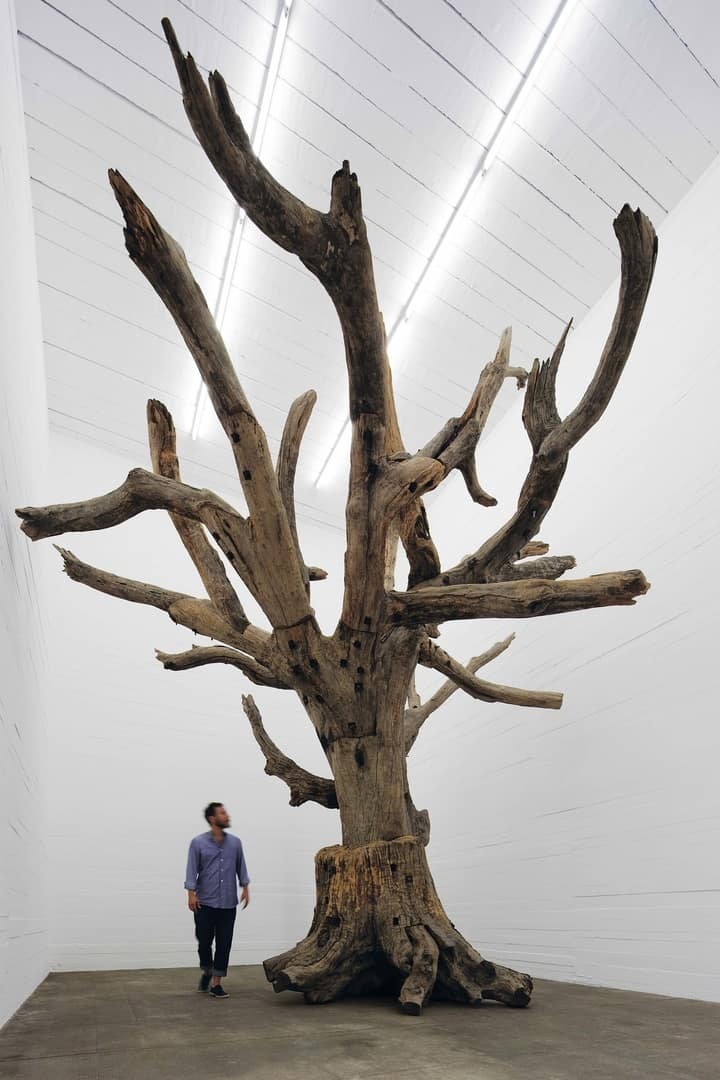
Ai Weiwei, Tree, 2009-2010, Photo. NOSHE, Gallery Weekend Berlin, 2015, Boros Collection / Bunker
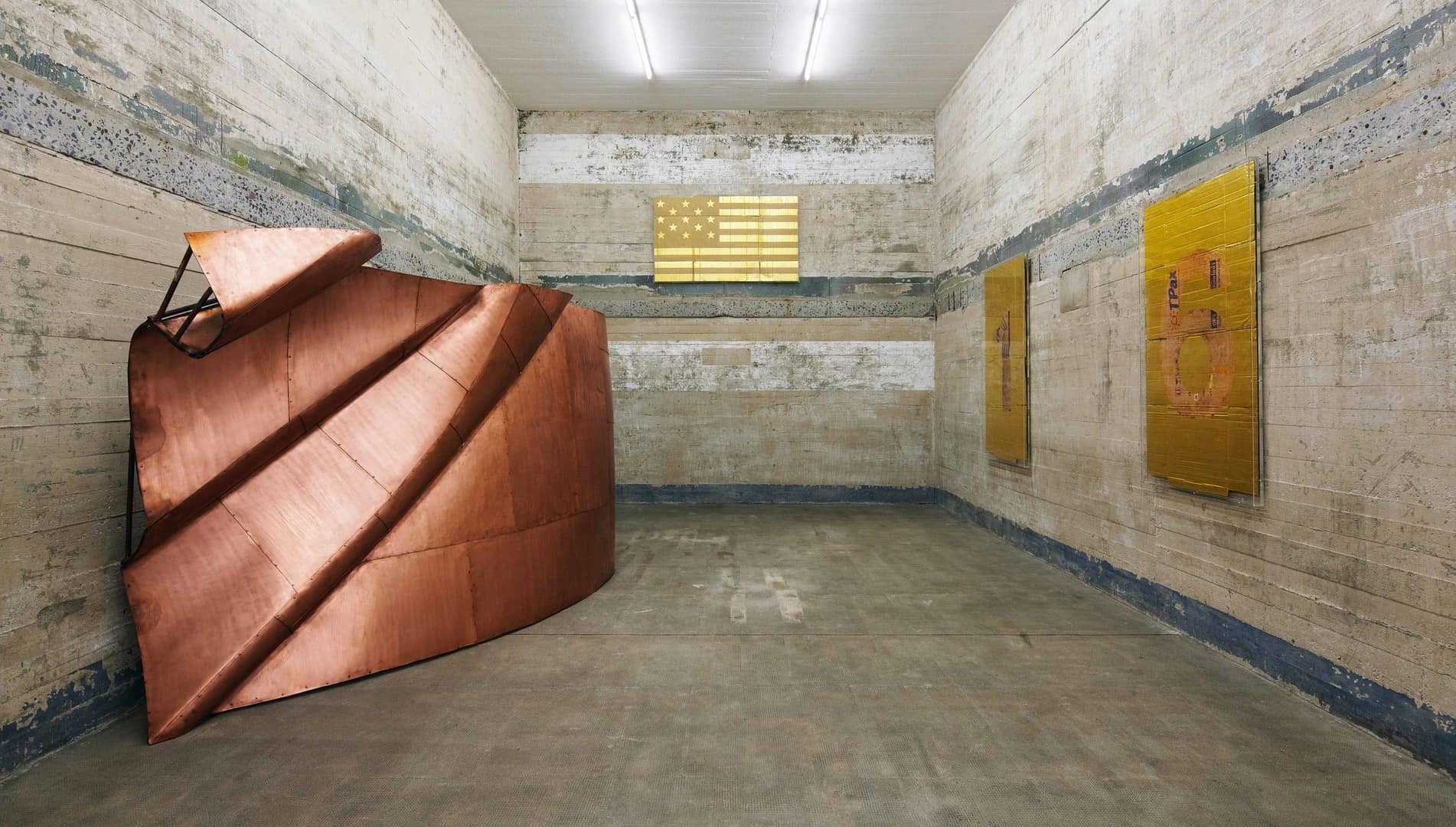
Danh Vo, Numbers (6), 2011; Trio, 2010; We the people (detail), 2011, Boros Collection / Bunker Berlin, 2015, Photo. NOSHE






